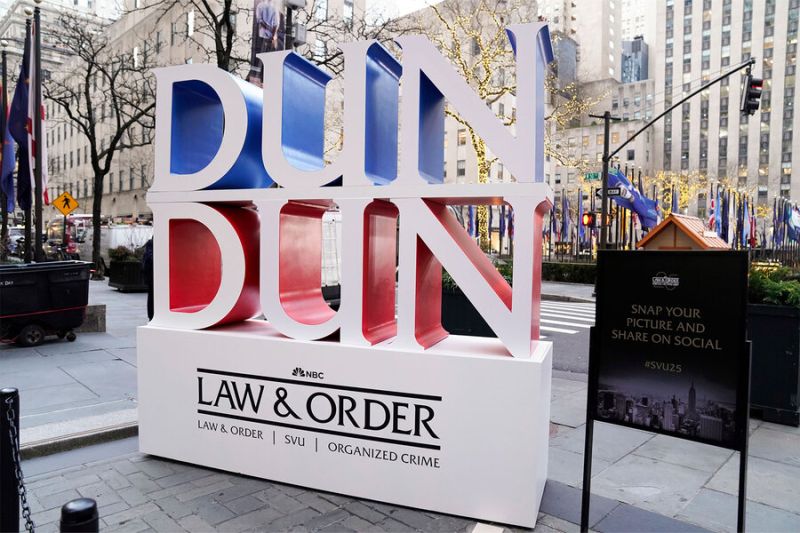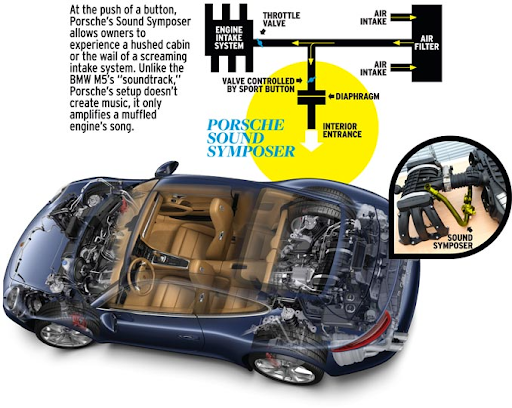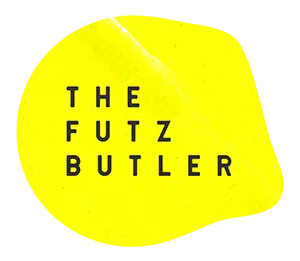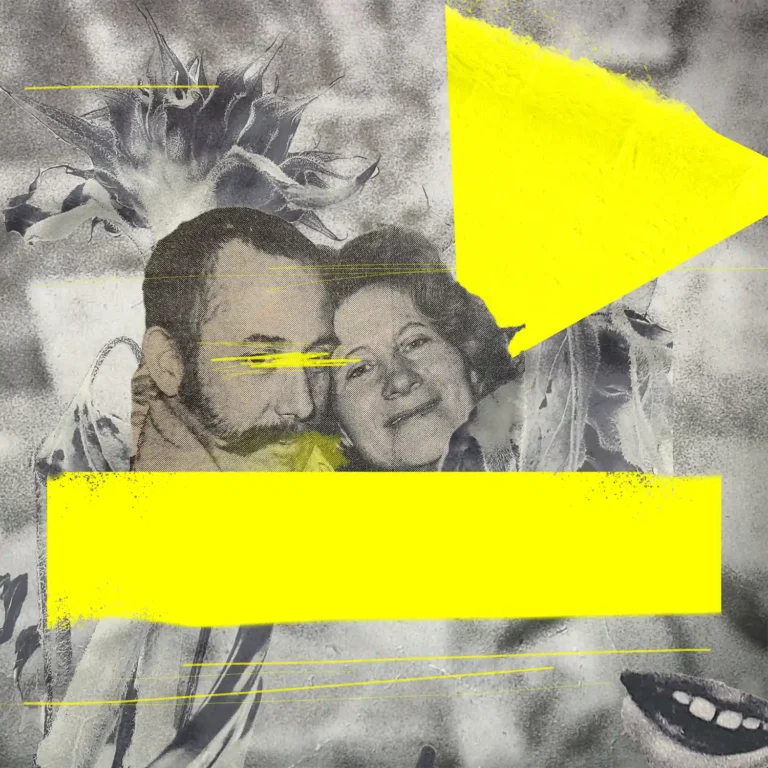One of the first things I get asked by clients dipping their toes into audio branding is:
“So… who’s actually doing this well?”
Fair question.
Especially if it’s your first foray into brand building with sound. Because despite what some might tell you, effective audio branding isn’t just about bolting a few notes onto the end of your ad and calling it a day.
It’s deeper than that. Much deeper…
The brands doing it well aren’t treating sound as an afterthought. They’re weaving it into the very fabric of how they interact with consumers – from product design to social, advertising to immersive environments.
It shows up everywhere the brand shows up.
And while some names are still oddly quiet in this space, the ones that do commit to audio are already reaping the benefits. Not just in recall or recognition, but in reach, resonance and cultural relevance. And of course, sales.
So, who’s getting it right?
Let’s take a look at some of the best audio branding examples around.
Table of Contents
1. UEFA Champion’s League
“Die Meister, Die Besten…”
You don’t need to be fluent in German, French or English (though it’s sung in all three) to feel what’s coming next.
Often cited as arguably the greatest sports anthem ever, this is our go-to example of an audio branding Fixed System.
A Fixed System uses audio assets that centre around a core idea and a largely fixed representation of that idea. Key elements such as structure, melody, instrumentation and production remain consistent.
In this case, it’s the powerful use of choir and orchestral instrumentation.
Other examples of a Fixed System include Netflix, ITVX and Citroën.
A Fixed System usually creates a more tangible and familiar ‘sound world’ for the brand to inhabit than a Modular System, which might rely more heavily on a recognisable melody to carry the brand’s identity.
Composed by Tony Britten in 1992, the Champions League anthem borrows heavily from Handel’s Zadok the Priest. But this isn’t just classical pastiche, it’s branding as theatre.
Majestic. Operatic. Global.
Why it works
By leaning into elements of classical harmony and orchestration, the audio brand evokes a clear sense of grandeur and prestige. It perfectly supports the ‘best of the best’ positioning of the UEFA Champions League.
When a sound becomes so closely tied to a brand that it enters wider culture, the audio strategy moves into a new realm, where it takes on a life of it’s own. It stops being just branding and actually forms part of culture more widely.
Other brands and media tap into the tropes it has created (Just Eat crossover activation, anyone?) and try to benefit from the associations it has built. UEFA has also leaned into this, creating similar brand anthems for the Europa and Europa Conference Leagues in recent years.
And it’s also adaptable. Santander even rolled out 35 localised versions globally. That’s not just localisation. That’s personalisation at scale.
Typically, brand anthems tend to exist to satiate the board and CMO. They rarely reach consumers in full form, which can make them feel like a bit of a vanity exercise for brands. (Read more here: 12 Audio Branding Mistakes Most Brands Make).
But this is one of the few cases where a brand anthem actually serves the audience. The format allows space to play a longer track, and that makes all the difference.
The versatility of the UCL brand anthem – from short 2-second bumpers of the key vocals to longer, bed-like underscores – also makes this asset perfect for a wide range of scenarios, inextricably tying the music to the experience of Champions League football at key moments.
In UEFA’s #UCLFeeling fan poll (2020), over 75,000 fans picked the anthem as their ultimate UCL moment – beating comebacks, goals, and even Messi.
The activation of the assets is also tightly choreographed, with strong audio brand guidelines. Ad bumpers, player walkouts and trophy lifts are all carefully curated to feature the right manifestation of the iconic brand anthem. UEFA ensures every match night replicates the same experience – stadium décor, StarBall centre circle, and anthem – whether in Manchester or Milan.
This is the takeaway: consistency builds value.
It’s now so embedded in football culture that even small tweaks – like UEFA’s 2024 re-recording with choir Tenebrae – triggered genuine backlash. “They ruined the legendary anthem,” wrote one fan.
That’s not opinion. That’s ownership.
That’s the holy grail of audio branding.
It transcends mere music to become a cultural signal. The 8:45 PM CET anthem isn’t just the start. It’s the signal. That emotional ignition, recognised in surveys, player testimonies, marketing metrics and digital engagement.
Not just being heard, but felt.
Every Tuesday. Every Wednesday.
Across time zones and club colours.
Key Takeaway: Consistency builds value
2. Just Eat
Just Eat’s audio identity isn’t just memorable. It’s strategically layered, straddling the fixed and modular approaches superbly.
A Modular System centres around a core musical idea that is reworked to suit different touchpoints or functions, while keeping the central idea recognisable.
You can think of it a bit like a song covered by different artists. The song itself stays the same, but each artist’s version gives it a different sound and feel.
Establishing itself via a fixed system execution in the formative years has allowed Just Eat to evolve into a modular system, comfortable being reworked into nuanced activations at new strategic touchpoints and partnerships.
Famous celebrity tie-ins with the likes of Snoop Dogg and Christina Aguilera have further cemented the brand’s music and sound association. Squid Game-inspired takes, and even a Champions League version, speak to the strength of the core audio idea and its recognisability.
That’s the gold with this one. It evolves without ever losing the sonic fingerprint.
Why does it work?
At the heart of it all? That question:
“Did somebody say Just Eat?”
A simple phrase that lands hard on two fronts.
First, it bakes the brand name right into the hook, massively increasing attribution.
Second, it leans into a kind of cultural hijack. By co-opting a familiar phrase, Just Eat joins the ranks of “Wassup” (Budweiser), “Because you’re worth it” (L’Oréal), and “Does exactly what it says on the tin” (Ronseal).
Everyday language turned into brand equity.
Its effectiveness goes beyond recall. It’s the attribution that makes any digital brand asset effective. It’s no good simply remembering an audio mnemonic if you don’t know who it belongs to.
And the results? Serious numbers.
- 70% of UK consumers now associate “Did somebody say…” with Just Eat.
- SoundOut data shows +8% growth in audio brand attribution between 2021–2023, across both Gen Z and older audiences.
- The Snoop Dogg spot? Over 4 million views in three days.
Ad awareness jumped from 29.2 to 34.9 post-campaign. Word-of-mouth doubled.
Using your brand name always runs the risk of pushing an audio mnemonic into what can feel like unfashionable jingle territory. But a certain irreverence and knowingness in the wider brand universe helps it transcend kitsch and become… sticky. In the best way.
Key Takeaway: Everyday language can become brand equity
3. Law & Order
Dun-Dun.
That’s it. That’s the brand.
The Law & Order ‘clang’ is a classic example of an audio identity that far outweighs the impact of any visual logo.

The New York Times called it “the most successful sound in television history.” They’re not wrong.
Trademarked in 2006 as a ‘non-traditional sound mark’, this two-note sting is instantly recognisable across every episode, spin-off, meme, ringtone and parody.
Why it works
The unusual execution of those two musical hits is what makes this ownable. They’re both familiar and yet impossible to fully define. That’s the sweet spot we often aim for when crafting a core sonic branding idea – something recognisable, but still distinctive enough to be clearly owned by the parent brand. Often, the gold lies in the layering. Unique combinations of seemingly unrelated sound sources can create something that feels fresh and unmistakable.
Composer Mike Post built this one from sonic fragments: a jail door, a hammer on an anvil, and 500 Japanese men stomping on a wooden floor in kabuki style.
It’s an arresting sound that evokes a metaphorical jail-cell lock, but never spells it out literally.
And because it doesn’t sound one-dimensional, it has resisted aging.
Yes, audio has an obvious immediacy. But like any visual digital brand asset, sound needs consistent exposure in the marketplace to truly embed with audiences and signal what it’s meant to. The omnipresence of the dun-dun in every episode since September 1990 has made it part of culture. It’s streamed as ringtones, used in skits, shared as memes, and parodied across sitcoms and cartoons.
Not all brands need a melody.
Sometimes, all you need is dun-dun.
Key Takeaway: Not all brands need a melody
BONUS TIP: Minimalism makes it land harder. Law & Order barely uses music throughout. So, like the cultural cache of the EastEnders ‘doof doofs‘ on this side of the pond, when the sting hits, it matters. It feels like a moment.
4. AO
Most brands spend years trying to land on a distinctive, ownable sonic asset. AO found one in a punk anthem from 1976.
This is one of the rare cases where an existing track becomes an accidental brand asset. The Ramones’ Blitzkrieg Bop wasn’t written for AO, but the opening chant – “Hey! Ho!” – just happens to sound uncannily like the letters A-O.
Add the track’s built-in call to action – “Let’s go” – and you’ve got a four-word chant that does the job of a purpose-built sonic logo, without ever needing to write one.
Why it works
It’s punchy. It’s rhythmic. It’s repeatable. In other words, it’s an earworm.
But it isn’t just the happy phonetic coincidence. It’s the synergy between sound and brand personality. The track signals AO’s tone: bold, no-nonsense, energised. The tempo suggests speed, which is exactly what you want when you’re replacing broken white goods. You don’t want poetry. You want power. And you want it now.
It’s also deceptively smart in its structure.
Four syllables. Two beats. A chant.
Perfect for recall. Perfect for mimicry. It travels. Consumers become accidental ambassadors just by repeating it.
This is the kind of audio branding that doesn’t feel like branding. It feels like fun.
Key Takeaway: Simple means easily repeatable
5. Apple Packaging: When Your Brand Starts Talking Before It’s Opened
Sound doesn’t wait for attention. It goes in under the radar. And in packaging, that’s a powerful tool.
Some of the smartest brands are starting to realise that what something sounds like when you touch it, open it or interact with it can carry just as much brand equity as the logo on the box.
This is sonic packaging, and it’s quietly becoming a branding battleground.
Think about Apple’s box pull.
Unboxing an iPhone isn’t just slow because of friction. It’s designed to hiss. That low, suction-like sound as the lid lifts is engineered through air-pressure resistance. It’s intentionally crafted to evoke the high-tech hiss of precision hydraulics and to signal to the user that this is the sound of premium.
It slows down the experience and makes it feel ceremonial.
@maxklymenko Secret psychology of Apple packaging 🍎 Do you keep empty Apple boxes? 🤯 #learnontiktok #business #apple #psychology #iphone #marketing
♬ original sound – Max Klymenko
Why it works
What makes sonic packaging so effective?
- It creates ritual. The sound becomes part of the experience – like the pop of a Pringles can or the crunch of a Ferrero Rocher.
- It works subconsciously. You don’t have to process it – your body just responds.
- It can’t be ignored. You can look away. You can’t unhear something.
- It lingers. In a world where most packaging is thrown away within seconds, sound can be the one element that sticks. It travels with you. It becomes memory.
The best brands aren’t just thinking about how things look. They’re thinking about how they sound in your hands.
Now imagine if your packaging could be instantly recognisable, even in the dark.
That’s the power of audio branding.
Key Takeaway: Uses sound to create anticipation and a sense of ceremony
Your Brand. Your Voice. Your Sound
No clichés. Just original, ownable audio that delivers results.
6. Newcastle United FC Unsilence the Crowd
In the 2024/25 Premier League season, Newcastle United did something quietly brilliant.
In partnership with Sela and Prism Sports & Entertainment, they launched ‘sound shirts’, wearable tech that lets deaf and hearing-impaired fans feel the matchday atmosphere.
Microphones placed around St. James’ Park captured the roar of the crowd. That sound was converted into vibrations and sent wirelessly to motors embedded in the fabric of the shirt. So when the fans erupt, you feel it. In your chest. Down your arms.
It’s all part of the club’s Unsilence the Crowd initiative. A beautiful reminder that football isn’t just about what you see or hear. It’s about what you feel.
Why it works
This is audio branding meeting social change head on. It’s not about louder. It’s about deeper. About belonging. It’s about the inclusivity of being part of the Toon Army.
The technology gives partial-hearing fans the sensation most of us take for granted. According to the Royal National Institute for the Deaf (RNID), “It has the potential to make a real and lasting impact on how people who are deaf or have hearing loss experience live sports.”
Sound isn’t just noise. It’s identity. Emotion. Connection. And for fans who’ve been excluded from that for years, this isn’t just creative innovation. It’s access.
More of this, please.
Key Takeaway: Sound connects us emotionally better than any other sense
7. ITVX
Most platforms launch with a logo. ITVX launched with a sonic world.
When ITVX landed in December 2022, it wasn’t just about a streaming service. It was about brand transformation, and sound was central. ITV and DixonBaxi partnered with us here at The Futz Butler to create a fully bespoke sonic identity from the ground up.
Everything tied back to ITVX’s brand narrative: Spark. Amplify. Discover.
That meant leaning into the unconventional, using raw, unexpected sounds like sugar falling on a balloon, choir snippets recorded on iPhones across the UK, and percussive pulses scratched into vinyl.
This bespoke approach gives ITVX an audio DNA that’s 100% ownable and impossible to mimic.
Unlike other channel branding that relies on a mnemonic alone, the ITVX audio identity is a clear branded system, a flexible suite of sound beds used across both linear broadcast and digital platforms, tying the family together. The emotional tone is consistent: modern, bold, human.
Why it works
Because it rejects the expected. It doesn’t sound like TV. It sounds like ITVX.
It’s memorable not because it’s loud, but because it feels alive and embraces the varied cultural backgrounds of everyone in the ITV audience.
So the sound strategy doesn’t just create attribution. It creates resonance.
The hero mnemonic is story-led, compact, emotionally charged and packed with brand-focused intent. That’s the shift. From jingle to genuine. From utility to identity.
- ITVX’s brand awareness score has increased from 77.7 to 81.5.
- Their BrandIndex score has jumped 47.4%, from 13.5 to 19.9 (source: YouGov’s BrandIndex), overtaking Disney+ and Channel 4 as the UK’s fourth most considered streaming service.
- Streaming figures increased by 138%, with one billion streams in the first four months.
- In March 2023, ITV recorded its best ever streaming figures with 282 million streams, up by more than 100 million from 2022.
Key Takeaway: Different is genuinely ownable. Making it sound like your brand, not everyone else’s, delivers
8. Ring Doorbell
Ring didn’t just build a doorbell. They built a brand around a sound.
Founder Jamie Siminoff called the chime “vital” to Ring’s identity. And rightly so. After testing dozens of options, the team landed on a tone that’s short, simple and unmistakably theirs.
The three-note melody, built from a major triad – the building blocks of a major chord – is tonal shorthand for clean, confident and trustworthy.
A sonic logo that’s more than just catchy. It’s functional, familiar and ownable.
Why it works
Ring recognised that theirs isn’t a video product with sound. It’s an audio product with added video. That mindset shift shaped everything.
The Ring chime had to do more than alert. It had to reassure, reinforce and repeat. Whether you’re sitting in your kitchen, on a train or in a Zoom meeting, when that chime sounds, you know it’s Ring. In itself, a micro billboard. You don’t need to see the doorbell to know who made it. That’s how you normalise a brand.
Make it heard everywhere. Audio branding via osmosis.
Ring have also taken a smart and economical approach to digital brand assets, keeping their sonic brand palette intentionally minimal while placing premium audio-led features at the heart of their products.
Independent tests rated Ring’s two-way talk at 8.8 out of 10 – clear up to 7 metres outdoors. Recorded audio clarity scored a perfect 10 out of 10. This isn’t just great branding. It’s great audio product UX.
They’ve even added features like Doorbell Calls, which ring your phone like a voice call. It’s a thoughtful solution to notification fatigue, especially for older users. Small tweaks like this show they’re listening.
And listening, after all, is what Ring is built on.
Key Takeaway: Product sound is a central element of your audio identity
9. Domino’s
Few brands hit the audio branding jackpot. With the help of VCCP, Domino’s did it with a yodel.
That “Domin-oh-hoo-hoo” isn’t just a mnemonic. It’s a full-blown viral asset. By 2023, it had reached 93% aided attribution in the UK.
That’s elite-level recall, earned through effectiveness and repetition, not just airtime.
Why it works
This is brand bravery at its best. Doing something unmistakably different. Bet big, win big.
The brand leaned into its divisiveness. It’s designed to be polarising. That’s how it earns brainspace. Like your mum’s phone number, stuck there forever.
The mnemonic itself is wonderfully short. Just four syllables, but packed with character. Its upward yodel shape is memorable and easy to mimic. That’s key. It sticks not just because it’s heard often, but because people use it. From TikToks and memes to real-life humming. That kind of contextual placement makes it part of cultural rituals, not just advertising.
That’s not a lucky accident. It’s the result of smart media planning, relentless consistency, and a willingness to lean into something deliberately silly, but undeniably sticky.
Domino’s didn’t just place it behind a logo. They put their audio asset front and centre. The brand audio logo is always the hero.
From Channel 4 sponsorships to festive TV spots, their Christmas “Domin-oh-hoo-hoo” choir campaign reached an astonishing 95% of the UK population during the holiday season.
Domino’s have also been smart about how and where they use it. The mnemonic appears across a wide range of touchpoints: TV, radio, out-of-home, digital, even app activations like festive yodelling choirs. Again, the strategy isn’t accidental. It’s engineered for targeted saturation.
This is a masterclass in how to turn a tiny slice of audio into a full-spectrum brand builder.
“Domin-oh-hoo-hoo” might just be the most recognisable sound in UK advertising right now.
Key Takeaway: Pairing consistent media planning, putting sound front and centre and being unmistakably different is incredibly effective
10. Magnum ASMR Crack
The satisfying snap of thick chocolate giving way isn’t just a treat for the tastebuds. It’s ASMR as audio branding writ large.
What used to be an incidental part of the eating experience is now a distinctly hero asset.
Why it works
Where some brands may have missed this trick (Velcro, I’m looking at you…), in 2025 Magnum have elevated the chocolate crack to the centrepiece of their sonic branding strategy. After 35 years as an iconic product trait, the ‘chocolate crack’ delivers recognisability across radio, digital and social media with remarkable precision.
The sound is instantly recognisable. An audio signature built from real product experience.
It taps into that sensory thrill audiences describe as “deeply satisfying” and even “tingling.” It doesn’t just advertise chocolate. It feels like eating it.
Magnum re-recorded that crack in ultra-high fidelity to ensure it was not only accurate but immersive.
They also designed media placements that were equally creative. Using Global’s API, they synced the chocolate snap on Heart Radio in real time with outdoor ads in London and Manchester. That kind of cross-sensory precision doesn’t just deliver a message. It creates a standout moment, centred on sound.
By repositioning the crack as a brand asset in its own right, Magnum have fused premium with primal. It’s sensory branding at its most effective: short, ownable, emotionally resonant, and engineered for Pavlovian propensity to buy.
Key Takeaway: Your audio identity might already exist as part of your UX – you just need to amplify it
11. Big Brother
Few TV shows have harnessed the power of audio branding quite as effectively as Big Brother.
From the kinetic, suspenseful tension of the signature theme music by Paul Oakenfold and Andy Gray, to the ever-present Geordie voiceover of Marcus Bentley, it’s the audio that has endured as one of the show’s most powerful brand components.
As the format has evolved – along with its channel home – these consistent audio elements have provided continuity. Together, they form one of the most recognisable and enduring audio identities in British broadcasting.
Why it works
The theme isn’t background music. The VO delivery isn’t just exposition. Both are the brand.
Where most shows would have opted for a cut-down version of a 13-minute trance anthem or steered clear of a hyper-localised accent, Channel 4 leaned into these points of difference as a way to sonically reinforce the groundbreaking nature of this emerging reality format.
These elements are so distinct in and of themselves, they act as audio sandwich boards, signposting the Big Brother brand even when they’re used outside the context of the show itself.
This is audio branding at full strength: brave, indexical and woven deep into cultural memory.
Key Takeaway: Consistent brand sound works as the glue that holds an evolving brand together
12. Harley Davidson
Car and motorcycle manufacturers have long known how to make their engines quieter. But many have chosen not to.
Why? Because it’s been proven to undermine the user experience.
Certain models of Harley-Davidson were reported by customers to feel underwhelming and lacking that throaty, visceral sonic experience their die-hard customer base had come to expect. Removing it did more harm than good.
Harley-Davidson understood that the sound of the motorbike goes to the heart of the user experience. They even attempted to trademark their engine sound.
Similarly, Porsche’s Sound Symposer, BMW’s Active Sound Design and VW/Audi’s Soundaktor all use creative technologies to introduce adaptive recordings of throttle sound into the cabin through the car’s speaker system. This enhances the driving experience while also balancing the shift towards greener, more eco-conscious manufacturing.

Key Takeaway: Sound is just as much, if not more, part of UX as visual
13. The Sound of Signal Iduna Park, Borussia Dortmund, Germany
The intent behind Signal Iduna Park’s design placed sound at the heart of its goal: to create a terrifying atmosphere for opponents.
Why it works
The steep rake of the famous Südtribüne, home of the Kop-esque ‘Yellow Wall’, makes crowd noise feel like it’s falling forward. There is intentionally no roof gap above, which allows sound pressure to build vertically and hit the pitch with force.
Such is the effectiveness of the design and fan experience that the south stand was even structurally reinforced to handle the low-frequency vibrations of synchronised chants.
Key Takeaway: Putting the sound at the heart of design can be truly powerful
Creating Audio Branding That Connects
Great audio branding isn’t about following a trend. It’s about recognising that sound is one of the fastest, most powerful ways to connect with people. It hits first. It sticks longest.
What all these brands have in common is intent. They’ve made strategic, creative choices about how they want to sound, and why that sound matters to their audience.
Whether it’s a three-note chime or the crack of chocolate, they’ve built systems designed not just to be heard, but to be remembered.
Because in a world where attention is fleeting, how you show up in sound is no longer a nice-to-have. It’s essential.
If you’re ready to explore how sound should show up across your brand, we’d love to chat.
Audio Branding FAQs
What Is Audio Branding?
Audio branding, sometimes called sonic branding, is the process of consistently curating what the customer hears at each and every interaction they have with your brand.
The most recognisable audio asset is often a sonic logo (also called audio logo or sound logo) – a short audio signature that instantly identifies and signposts a brand. But audio branding is much more than that – it’s the strategic use of sound and music to enhance how customers engage with your brand across a myriad of F2F and increasingly ‘sound-centric’ digital touchpoints.
What is a Sonic Logo?
A sonic logo is a brief, distinctive sound or musical sequence that identifies a brand, similar to how a visual logo functions visually. Typically lasting 3-5 seconds, an effective sonic logo instantly triggers brand recognition even without visual accompaniment. Studies show sonic logos can achieve 96% greater brand recall compared to visual elements alone. Examples include Intel’s five-note sequence, Netflix’s “ta-dum” sound, and McDonald’s “I’m Lovin’ It” musical signature.


